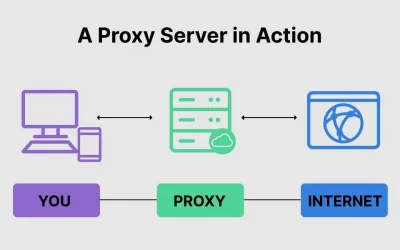Test your current internet speed
Before you get started, test your current internet speed. Use your speed test result as a baseline and compare the results as you go through your journey on reaching a faster internet connection.
SpeedtestIn the intricate landscape of networking and web technologies, one term that often emerges is “Reverse Proxies.”
Understanding this concept is crucial for anyone navigating the digital realm, be it developers, system administrators, or businesses aiming to optimize their online presence.
Definition of Reverse Proxies
So, what exactly is a reverse proxy?
In essence, it acts as an intermediary between client devices and servers, handling requests on behalf of the servers. Unlike traditional proxies that work on behalf of clients, reverse proxies work on behalf of servers, improving security, performance, and other aspects.
How Reverse Proxies Work
Forward and Reverse Proxy Distinction
To comprehend reverse proxies, it’s essential to distinguish them from their counterpart – forward proxies. While forward proxies serve clients by intercepting requests from them, reverse proxies intercept requests from servers, optimizing communication and providing an additional layer of control.
Benefits of Using Reverse Proxies
The advantages are manifold. Improved security, load balancing, and web acceleration are some of the key benefits. Reverse proxies act as a shield, safeguarding servers from direct exposure to the internet and potential security threats.
Use Cases of Reverse Proxies
Enhancing Security
One primary role of reverse proxies is enhancing security. By acting as a gatekeeper, they protect servers by intercepting requests, screening malicious traffic, and preventing direct access to sensitive information.
Load Balancing for Improved Performance
In high-traffic scenarios, distributing incoming requests evenly across multiple servers becomes paramount. Reverse proxies excel in load balancing, ensuring optimal performance and preventing server overload.
Web Acceleration
Reverse proxies cache static content, reducing the load on servers and accelerating content delivery. This not only enhances user experience but also positively impacts search engine rankings.
Impact on SEO
Positive SEO Aspects
The impact of reverse proxies on SEO is noteworthy.
Faster load times, enhanced security, and improved user experience contribute positively to search engine rankings.
Potential Drawbacks
However, it’s essential to be aware of potential drawbacks, such as misconfigurations leading to SEO issues.
Careful planning and monitoring are necessary to mitigate these risks.
Future Trends in Reverse Proxies
Evolving Technologies
As technology advances, reverse proxies are expected to evolve. Trends like edge computing and enhanced security protocols will likely shape the future of reverse proxy implementations.
Anticipated Developments
Keeping an eye on anticipated developments in reverse proxy technologies helps businesses stay ahead of the curve, ensuring they leverage the latest advancements to their advantage.
Tips for Choosing a Reverse Proxy Solution
Factors to Consider
Selecting the right reverse proxy solution involves considering factors like scalability, security features, and compatibility with existing infrastructure.
Key Features to Look For
Key features, such as SSL termination, caching capabilities, and robust load balancing, should be prioritized when evaluating reverse proxy solutions.
Conclusion
In conclusion, the role of reverse proxies in optimizing web infrastructure cannot be overstated. From bolstering security to enhancing performance, their multifaceted benefits make them indispensable in the digital landscape. As businesses and websites strive for excellence, integrating reverse proxies into their architecture becomes a strategic move.

The visionary founder behind SpeedtestGo, an innovative platform dedicated to helping users measure and optimize their internet speed. With a deep-rooted love for technology and a mission to empower individuals with reliable internet connections, Shawn has created a remarkable space where users can test their internet speed and gain valuable insights and information through engaging blog content.








